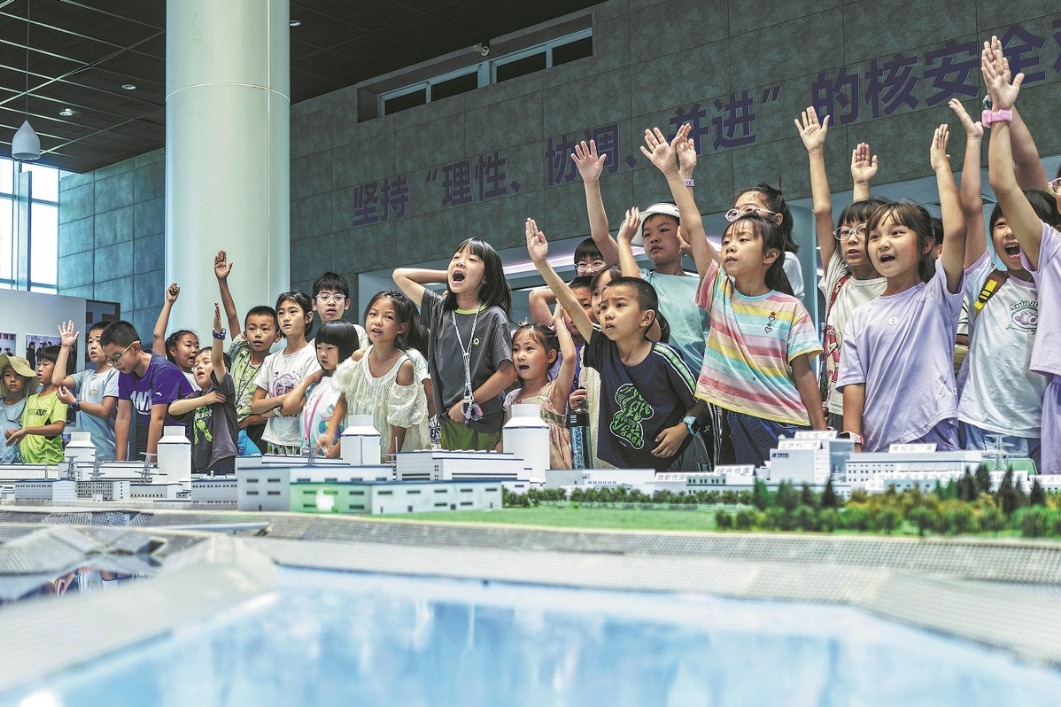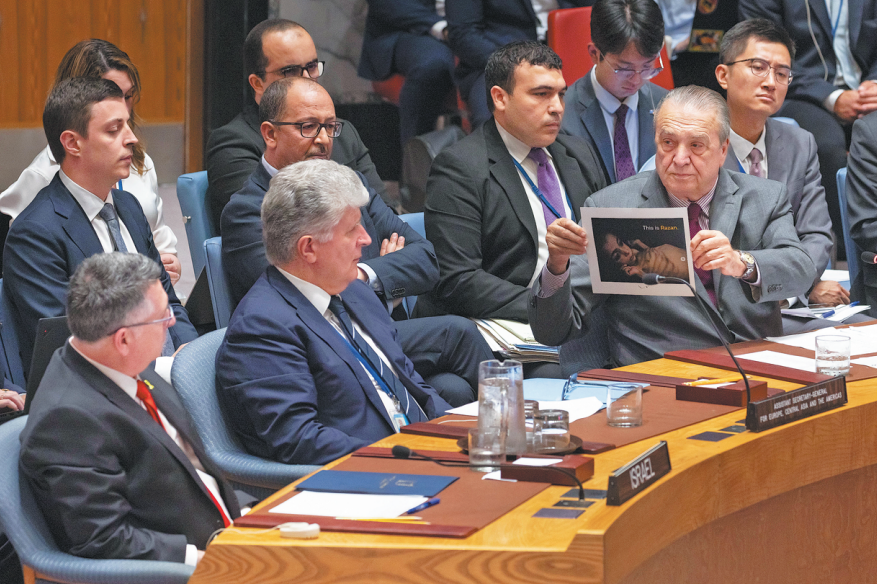Hopes for future lie on students' plates in school canteens

China has a critical role to play in South-South cooperation, such as building more sustainable school meal programs in developing countries amid post-pandemic economic challenges, climate change and rising food prices, a United Nations official says.
"The Chinese government has put in place good nutrition guidelines, innovations in areas such as food fortification to address anemia, as well as an effective monitoring framework for school meals," said Carmen Burbano de Lara, director of school meals and social protection service of the UN World Food Programme during a visit to China in March.
"What China has done here is inspirational, and the scale it reached is very important for other countries to learn from," she said.
Since Burbano's first trip to China in 2009, she has maintained a strong connection with and passion for the country. Her maiden trip coincided with the publication of Rethinking School Feeding, which she co-authored and which later became one of the documents that the Chinese nutrition improvement program relied on.
Since 2018, WFP China, along with local governments, has conducted trial initiatives on improving preschool nutrition in rural China, targeting left-behind children and low-income families.
The huge investment made by the Chinese government to ensure children's nutrition in recent years is particularly significant, Burbano said.
"With each visit to China I could see that cooks were trained, the infrastructure in schools was enhanced and foods such as rice and soy sauce were fortified."
In 2022, China joined the School Meals Coalition, a platform to restore school meal programs that had collapsed following the COVID-19 pandemic. Now, China is working with other governments to restore school meals around the world.
As the world pays more attention to school meals, it is imperative to help low-income countries build more sustainable school meal programs, Burbano said.
Low-income countries lag behind the rest of the world when it comes to providing meals to children. About 61 percent of children receive meals in schools in high-income countries, but only 18 percent do so in low-income countries, a WFP report said.
Although there has been a recovery overall, the reach of school meals in low-income countries remains at 4 percent below pre-pandemic levels, according to the WFP report "The State of School Feeding Worldwide 2022". In the two years to 2022, the amount of international financial aid that these schools received fell from about $267 million to $214 million.
Burbano said she saw poverty and realized what unequal society meant when she was growing up in Quito, capital of Ecuador.
"If a student comes from a poor family, it's likely that the meal they get at school will be the most important one of the day," she said. "The mere presence of a meal in school sometimes is enough reason for parents to send their sons and especially daughters to school."
It is not just an investment in children and families, but also economies of both rural and urban communities. In fragile countries, the school meal programs are supporting efforts in building peace and trust, she said.
Studies at Harvard University showed that for $1 invested, $9 is returned in the form of economic benefits in health, education, social protection, among other things. Where school meals are available, enrollment goes up by 9 percent, and anemia in girls goes down by 20 percent, according to the studies.
"I would like to see more sustainable food systems that link small farmers to schools and children," Burbano said. "All schools can have clean energy for cooking, and women can have more access to jobs through such systems."
During her visits to many schools in western China over the years, Burbano has also had the opportunity to share with children the meals they were receiving as part of the program.
"It was a great experience, eating what the children received at school: the fortified rice, vegetables, eggs and a variety of soups. I found the meals both delicious and nutritious," she said. "I was happy that what I strongly believed, what shaped my own life, was really being practiced here in China."
Kuang Hanying contributed to this story.

Today's Top News
- 'China shopping' boom spurred by favorable policies helps drive growth: China Daily editorial
- New tariff threat to ensure the chips fall to US: China Daily editorial
- China completes first landing, takeoff test of manned lunar lander
- China's new free preschool policy to save families $2.8 billion
- China's foreign trade rises 3.5% in first seven months
- China's foreign trade up 3.5% in first seven months






























